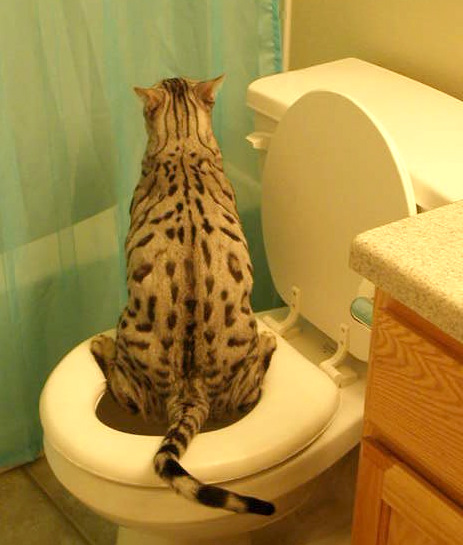Potential Risks of Flushing Cat Poop Down Your Toilet - Advice for Safer Handling
Potential Risks of Flushing Cat Poop Down Your Toilet - Advice for Safer Handling
Blog Article
This article in the next paragraphs involving Don’t flush cat feces down the toilet is exceptionally entertaining. Check it out for yourself and see what you think about it.

Introduction
As feline proprietors, it's essential to bear in mind how we deal with our feline pals' waste. While it might seem practical to flush feline poop down the toilet, this method can have damaging effects for both the environment and human health and wellness.
Ecological Impact
Flushing feline poop presents harmful virus and bloodsuckers right into the water system, presenting a substantial risk to aquatic ecological communities. These contaminants can adversely impact aquatic life and concession water high quality.
Health Risks
Along with environmental issues, flushing feline waste can likewise position wellness risks to human beings. Feline feces may include Toxoplasma gondii, a parasite that can trigger toxoplasmosis-- a possibly serious illness, especially for pregnant ladies and individuals with weakened immune systems.
Alternatives to Flushing
Fortunately, there are more secure and extra liable ways to dispose of cat poop. Consider the following alternatives:
1. Scoop and Dispose in Trash
The most typical method of taking care of cat poop is to scoop it into a biodegradable bag and toss it in the trash. Be sure to make use of a devoted clutter scoop and dispose of the waste immediately.
2. Usage Biodegradable Litter
Choose naturally degradable cat trash made from materials such as corn or wheat. These trashes are environmentally friendly and can be securely gotten rid of in the trash.
3. Hide in the Yard
If you have a backyard, think about hiding feline waste in a designated area away from vegetable yards and water resources. Make sure to dig deep enough to stop contamination of groundwater.
4. Install a Pet Waste Disposal System
Buy a pet garbage disposal system specifically designed for feline waste. These systems utilize enzymes to break down the waste, minimizing smell and ecological impact.
Conclusion
Responsible family pet ownership prolongs past giving food and shelter-- it likewise includes correct waste administration. By avoiding flushing feline poop down the toilet and selecting alternative disposal techniques, we can minimize our ecological impact and secure human health and wellness.
Why Can’t I Flush Cat Poop?
It Spreads a Parasite
Cats are frequently infected with a parasite called toxoplasma gondii. The parasite causes an infection called toxoplasmosis. It is usually harmless to cats. The parasite only uses cat poop as a host for its eggs. Otherwise, the cat’s immune system usually keeps the infection at low enough levels to maintain its own health. But it does not stop the develop of eggs. These eggs are tiny and surprisingly tough. They may survive for a year before they begin to grow. But that’s the problem.
Our wastewater system is not designed to deal with toxoplasmosis eggs. Instead, most eggs will flush from your toilet into sewers and wastewater management plants. After the sewage is treated for many other harmful things in it, it is typically released into local rivers, lakes, or oceans. Here, the toxoplasmosis eggs can find new hosts, including starfish, crabs, otters, and many other wildlife. For many, this is a significant risk to their health. Toxoplasmosis can also end up infecting water sources that are important for agriculture, which means our deer, pigs, and sheep can get infected too.
Is There Risk to Humans?
There can be a risk to human life from flushing cat poop down the toilet. If you do so, the parasites from your cat’s poop can end up in shellfish, game animals, or livestock. If this meat is then served raw or undercooked, the people who eat it can get sick.
In fact, according to the CDC, 40 million people in the United States are infected with toxoplasma gondii. They get it from exposure to infected seafood, or from some kind of cat poop contamination, like drinking from a stream that is contaminated or touching anything that has come into contact with cat poop. That includes just cleaning a cat litter box.
Most people who get infected with these parasites will not develop any symptoms. However, for pregnant women or for those with compromised immune systems, the parasite can cause severe health problems.
How to Handle Cat Poop
The best way to handle cat poop is actually to clean the box more often. The eggs that the parasite sheds will not become active until one to five days after the cat poops. That means that if you clean daily, you’re much less likely to come into direct contact with infectious eggs.
That said, always dispose of cat poop in the garbage and not down the toilet. Wash your hands before and after you clean the litter box, and bring the bag of poop right outside to your garbage bins.
https://trenchlesssolutionsusa.com/why-cant-i-flush-cat-poop/

We were made aware of that report on How to Dispose of Cat Poop and Litter Without Plastic Bags through a good friend on our other web address. Please take the time to promote this post if you enjoyed it. I appreciate reading our article about Don’t flush cat feces down the toilet.
Suggested Site Report this page